





Manchester Airport today celebrates its 75th anniversary. On Saturday June 25th 1938, the airport was officially opened by an air display from the Royal Air Force by the command of Sir Kingsley Wood, his Majesty's Secretary of State for Air.
Operations began two days later and in the first 14 months, the airport handled 7,600 passengers, which is the equivalent of a Summer morning's work today.
Manchester was the first city in Great Britain to establish a municipal aerodrome when an Air Ministry licence was granted to the Corporation on April 22nd 1929. In January 1934, an airline senior pilot claimed that the existing Barton site for Manchester was unsuitable and by July 1934 the City Council had chosen Ringway as a new home. A Public Inquiry was held in October and the Government approved the site in February 1935.
The first service was by KLM and flew to Blackpool, Speke, Ringway via a request stop to Doncaster and finally Amsterdam. The original 1938 route network included the exotic hotspots of Western Super-Mare, Croydon and Doncaster whereas Manchester now serves close to 200 international destinations worldwide. The early airlines of Great Western and Southern and Railway Air Services have been replaced by the likes of Emirates, American, Etihad, Singapore, Qatar, United and Delta on the departure boards.
Andrew Cowan, Chief Operating Officer for MAG, owners of Manchester Airport, said: "Today is a significant milestone in our history as we reach our 75th anniversary. I hope that this was the vision that the city forefathers had for the project when they first decided to open an airport here. It's even more significant for us this year as we've completed a transformational increase in the size of the company having added London Stansted to our group of airports.
This Summer, Manchester has surpassed 20m passengers again
"This Summer, Manchester has surpassed 20m passengers again and we are the third largest airport in the UK, while the company is responsible for 42m passengers as a group of airports and we will begin to build our Airport City development this year, further cementing Manchester's reputation as a European business destination. We've achieved much in our opening 75 years of existence and we're well placed for an even brighter future."
The Secretary of State officially opened the airport at 12.30pm before the air display from RAF aircraft. The public were invited to 'joy-ride' on selected flights between 6.15pm and 10pm. Aircraft such as a De Havilland Express, a Mongoose Avro and a Fox Moth were stationed adjacent to a public enclosure where passengers could experience flights for 5 shillings per person.
The Lord Mayor of Manchester in 1938 was alderman Joseph Crookes Grime, and on the day of the air display, he quoted in his notes from a publication called 'Invitation to Industry' from the Manchester Development Committee. He said in those notes: "In transport, in finance, in industry and public services the city stands out as a world centre, economically equipped for the needs of today and tomorrow. No field for enterprise can offer more than Manchester can offer."
The airport's history stretches back even further than 1938 as Manchester was already a hotbed of air activity. In 1910 Louis Paulhan landed a Farman biplane in a field near Burnage and claimed a £10,000 prize offered by the Daily Mail for the first person to fly from London to Manchester. A road at the airport's Runway Visitor Park is named in his honour. A number of short-lived aerodromes existed around Manchester in order to handle increasing air traffic, and in 1919, Britain's first scheduled air service began from a private airfield in Manchester to Birkdale Sands in Southport and on to South Shore, Blackpool. In 1926, the city fathers realised that unless Manchester had a permanent airport, the city could suffer and, as a result of their efforts, the first Manchester Airport was built, of which today's airport is the direct descendent.
During World War 2, the airport became a hub of wartime engineering activity as an aircraft manufacturing centre for Fairey Aviation and Avro. Runway and airport facilities were enhanced with three new runways and ten new hangars being added during this period. The airport also acted as a training centre for over 60,000 parachutists.
75 years on, the airport is the third largest in the UK and recently passed the 20m passenger mark again, having reached a peak of 22m in 2007. In 1954, the airport served a million passengers and by 1995, that had risen to 15 million. The airport now has three terminals and two runways and will this year begin construction on the UK's first Airport City project.
Manchester Airport is part of MAG and serves nearly 42 million passengers through its ownership and operation of Manchester, London Stansted, East Midlands and Bournemouth airports. Its property and facilities management arm, MAG Property, is responsible for the Group's £500m estate and the development of Manchester's Airport City.
Click 'next photo' above to see a selection of photos including their chandeliers, the Duke of Edinburgh opening Terminal 1 in 1962 and old aerial shots, compared to a recent view.
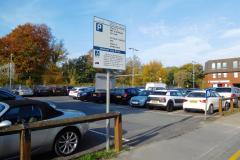
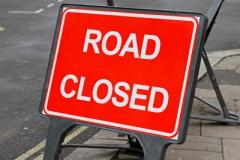

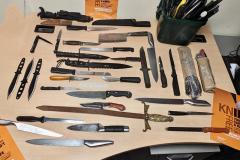
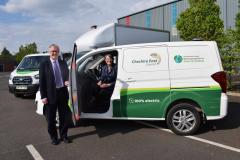
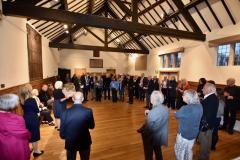
Comments
Here's what readers have had to say so far. Why not add your thoughts below.
And not many know that the old Altrincham road itself continues onto the airfield past the 'crash gate' at the Visitor Park entrance. It is (or was until recently) used as a taxyway for light aircraft. A few years ago to celebrate the 100th anniversary on the Wright Brothers' first flight, I was invited to fly our dH Chipmunk aeroplane into Manchester and was taxying along marvelling that it's the same bit of tarmac (complete with now-faded white line down the middle) that I sometimes used to cycle along on my way to school from Alderley!
And the 'new' terminal which I remember the Duke opening in 1962, with its Venetian glass chandeliers and cast ensignia of the airlines of the time around the walls. That was back in the day when airports had style!
I wonder what happened to them?